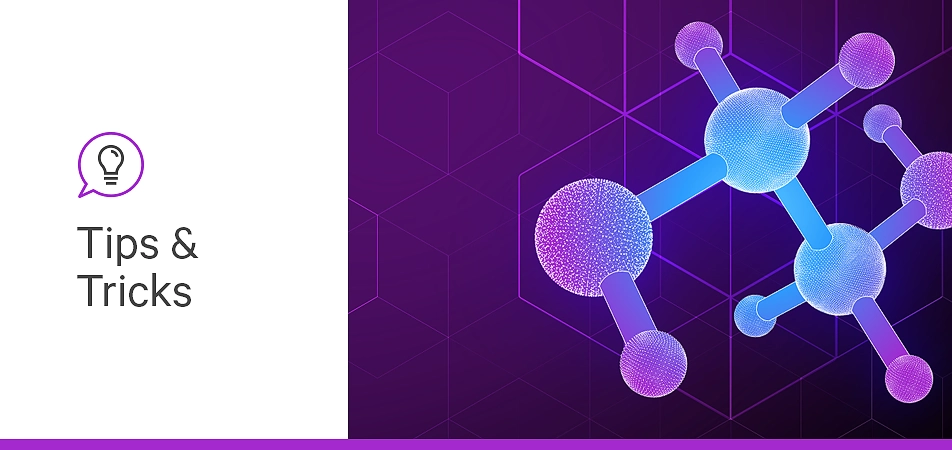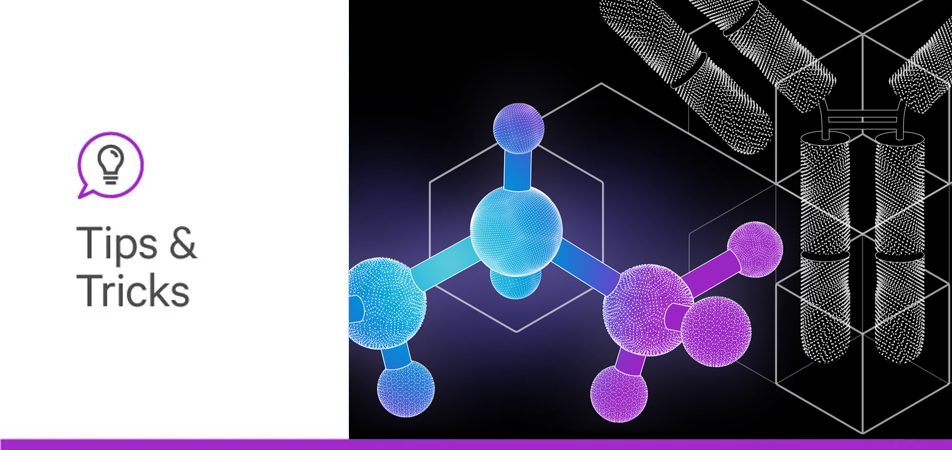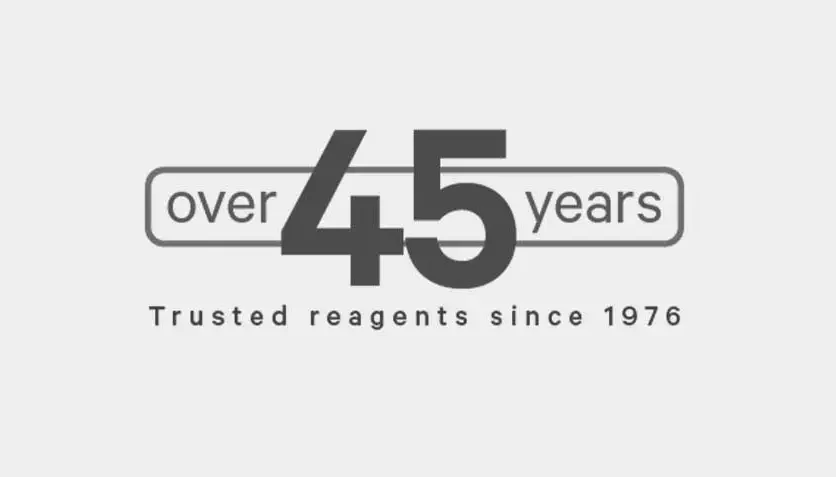

In the first of our three part series on Bioconjugation, we’ll be exploring what’s involved, how it enables life science research, the challenges associated with it, and the excitement in future work.
What is Bioconjugation?
Bioconjugation can be described as the chemical process of forming a stable covalent bond between two molecules. The establishment of the covalent bond modifies the structures of the biomolecules and grants them novel functions that they could not exhibit in their standalone states.
At least one member of bioconjugation is a biomolecule, such as a protein, a carbohydrate, a lipid, or a nucleic acid. Small molecules are often coupled with biomolecules in biomedical and pharmaceutical applications. In particular, the conjugation of drug molecules to proteins is instrumental in producing functional biomaterials. Antibody-drug conjugates (ADC), protein nanoparticles as drug carriers, and antibody-fluorescent dye are typical examples widely encountered in biomedical applications [1].
Basics of Bioconjugation Techniques
A wide range of organic chemistry techniques can be exploited to create functional bioconjugates. Several factors, including the choice of method, can significantly impact the success of bioconjugation. To start with, the purity and quality of the starting compounds are crucial, as impurities can cause side reactions that interfere with the native functions of both molecules.
An efficient bioconjugation method has high levels of reactivity, meaning that it can proceed to completion with minimum energy input, minimum byproduct formation, and maximum yield. It must also be site-specific, which is critical for the reproducibility of the bioconjugation process. Furthermore, functional groups must have the correct stereochemistry to be accessible, and appropriate linkers must be used to bring the two components closer if necessary.
In many cases, the bioconjugation must occur in the presence of living cells without interfering with the essential cellular processes. This demand is called bioorthogonality and may be achieved by choosing the right conjugation chemistry.
Below is a high-level summary of commonly used chemical reactions in bioconjugation.
The amide bond is natively found in many biomolecules, where it connects building blocks, for example amino acids in case of formation of peptides or proteins. It is also a common bioconjugation technique used in pharmaceuticals as well as nanoparticle-mediated drug delivery, owing to its high stability under a wide pH and temperature range [2]. Here, an amine group (e.g., in the nucleophilic center of a lysine residue) reacts with a carboxylic acid in the presence of coupling agents. Prior to the main interaction, the carboxylic acid is usually converted to more active electrophiles, such as esters, anhydrides, or acyl chlorides. However, other formation protocols have been proposed, such as coupling amines with alcohol and hydrolysis of nitriles [3].
Thiol-maleimide reaction, also known as the Michael addition reaction, is a very popular technique commonly used to modify protein structures, mainly the thiol group of cysteine residues. This bioconjugation technique is the most popular way of labeling proteins to produce functional therapeutics, the so-called Antibody-Drug Conjugates (ADC). The method has several advantages, such as the rapid reaction speed at neutral pH in aqueous buffers. Furthermore, the low relative abundance of available cysteine residues makes this reaction more selective and homogenous [4]. On the other hand, the instability of the conjugates leaves room for side reactions, such as thiazine rearrangement especially beyond pH 6.5-7.5, and non-selective labeling of primary amines (mainly lysine residues) at pH above 7.5.
The emergence of click chemistry methods gave rise to robust and simple bioconjugation methods. Copper-catalyzed azide-alkyne cycloaddition (CuAAC) is one such reaction, where an alkyne and an azide undergo 1,3-dipolar cycloaddition to form a 1,2,3-triazole ring. The copper catalyst is key to the progress of this reaction, as it forms copper-acetylide complexes with both compounds and brings them closer before the main reaction step [5]. Cycloaddition has a wide range of applications, from polymer synthesis to protein-small drug conjugates, owing to its high selectivity, which prevents side reactions with nearby functional groups. A big disadvantage of CuAAC is its inapplicability for bioconjugation in living tissues and organisms due to high toxicity of Copper. To overcome this limitation, the totally bioorthogonal copper free click chemistry was developed. The most commonly used functional group for copper free click chemistry is DBCO (Dibenzocyclooctyne) which was used in many in vivo studies. [15-17].
Bioconjugation is a powerful and versatile technique that can merge a biomolecule with various types of small molecules to unlock functions that neither standalone component could exhibit. Detailed explanations of our bioconjugation products can be found in the Vector Laboratories Bioconjugation Resource Guide and Bioconjugation Application Page. In part 2, we’ll be looking at the various applications and how they can contribute to your research.
1. Algar, W.R., A brief introduction to traditional bioconjugate chemistry. Chemoselective and bioorthogonal ligation reactions: concepts and applications, 2017. 1: p. 1-36.
2. Mahesh, S., K.-C. Tang, and M. Raj, Amide bond activation of biological molecules. Molecules, 2018. 23(10): p. 2615.
3. Wenner, W., Phenylacetamide. Org Synth, 1952. 4: p. 760.
4. Stenzel, M.H., Bioconjugation using thiols: old chemistry rediscovered to connect polymers with nature’s building blocks. 2013, ACS Publications.
5. Presolski, S.I., V.P. Hong, and M. Finn, Copper‐catalyzed azide–alkyne click chemistry for bioconjugation. Current protocols in chemical biology, 2011. 3(4): p. 153-162.
6. Brassard, J., et al., Antibody-drug conjugates targeting tumor-specific mucin glycoepitopes. Frontiers in Bioscience-Landmark, 2022. 27(11): p. 301.
7. Parakh, S., et al., Radiolabeled antibodies for cancer imaging and therapy. Cancers, 2022. 14(6): p. 1454.
8. Shevtsov, M.A., et al., Superparamagnetic iron oxide nanoparticles conjugated with epidermal growth factor (SPION–EGF) for targeting brain tumors. International journal of nanomedicine, 2014: p. 273-287.
9. Huang, Y., et al., Superparamagnetic iron oxide nanoparticles conjugated with folic acid for dual target-specific drug delivery and MRI in cancer theranostics. Materials Science and Engineering: C, 2017. 70: p. 763-771.
10. Ren, X., X. Meng, and F. Tang, Preparation of Ag–Au nanoparticle and its application to glucose biosensor. Sensors and Actuators B: Chemical, 2005. 110(2): p. 358-363.
11. Lieser, R.M., et al., Site-specific bioconjugation approaches for enhanced delivery of protein therapeutics and protein drug carriers. Bioconjugate chemistry, 2020. 31(10): p. 2272-2282.
12. Travis, C.R., et al., Genetic encoding of a bioconjugation handle for [2+ 2+ 2] cycloaddition reactions. ChemBioChem, 2020. 21(3): p. 310-314.
13. Yamazoe, S., et al., High-Throughput Platform to Identify Antibody Conjugation Sites from Antibody–Drug Conjugate Libraries. Bioconjugate Chemistry, 2020. 31(4): p. 1199-1208.
14. Wan, C., et al., The thiol-sulfoxonium ylide photo-click reaction for bioconjugation. Chemical Science, 2023. 14(3): p. 604-612.
15. Lee, S., et al. (2014). Labeling and Tracking Method without Distorted Signals by Phagocytosis of Macrophages. Theranostics, 4 (4), 420-31.
16. Murrey, H. E, et al. (2015). Systematic Evaluation of Bioorthogonal Reactions in Live Cells with Clickable HaloTag Ligands: Implications for Intracellular Imaging. J Am Chem Soc., 137 (35), 11461-75.
17. Kim, K., et al. (2016). Bioorthogonal Copper Free Click Chemistry for Labeling and Tracking of Chondrocytes In Vivo. Bioconjug Chem., 27 (4), 927-36.





Stay in the Loop. Join Our Online Community
Products
Ordering
About Us
Application
Resources

©Vector Laboratories, Inc. 2025 All Rights Reserved.
To provide the best experiences, we use technologies like cookies to store and/or access device information. Consenting to these technologies will allow us to process data such as browsing behavior or unique IDs on this site. Not consenting or withdrawing consent, may adversely affect certain features and functions. Privacy Statement